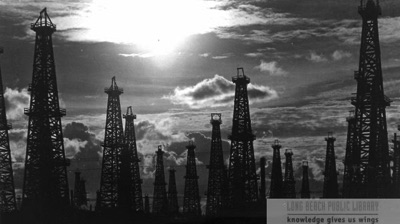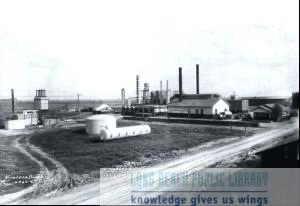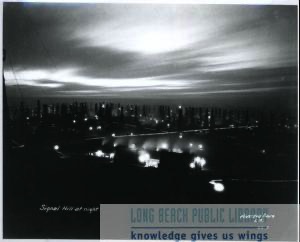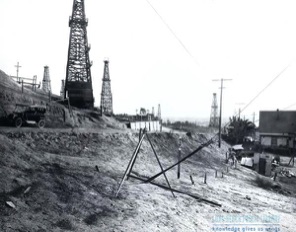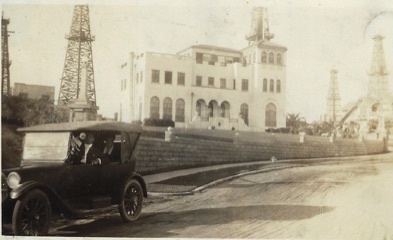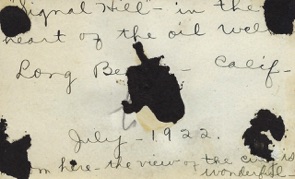
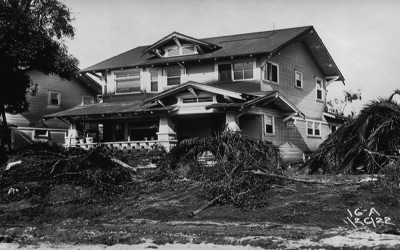
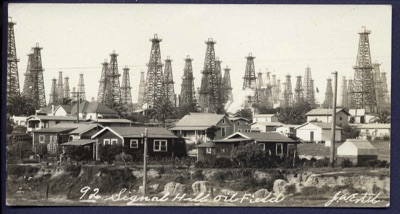
Soon after oil was discovered under Signal Hill, oil derricks went up everywhere. The pressure pushed the oil up with such force that there were fountains of oil that saturated the land and the homes next to them. The photo on the right shows the two homes built by the Green family in 1910 and how the hevy oil destroyed trees and all plant life nearby. The home on the left still survives in the Signal Hill historic district on Cresent Heights.
View of the Hill from St Louis and 19th ca1922-23
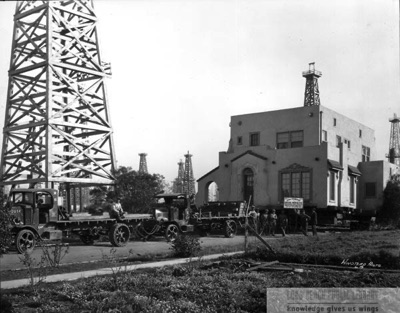
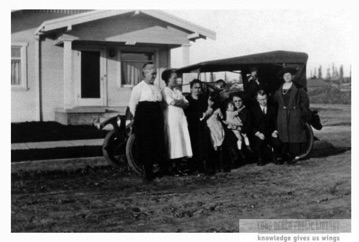
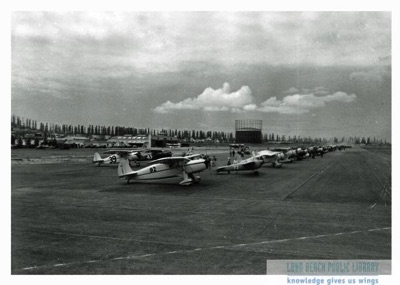
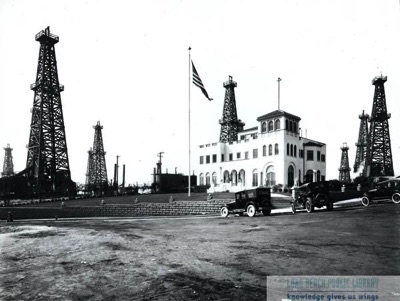
At 2,765 feet revealed oil sand. Shell promptly appropriated $50,000 to lease more acreage. On May 23, in another test, 70 feet of oil stood in the
hole.
On June 23, after exactly three months of drilling, the old cable tools were piercing rock at 3,1 14 feet when the wildcat blew in before dawn.
A crown of 500 swelled to 15,000 after sunrise, all astonished by the gusher.
When officially placed "on stream" after being brought under control]une 25th, it flowed at 590 barrels a day but production later bulged to
1,200. "My mother got oil all over her brand new hat," recalls Llewellyn Bixby III, president a of the Alamitos Land Co. , on whose property
Alamitos No.1 was drilled .
Speculators and promoters engaged in a frenzied competition for signatures of Signal Hill land owners on mineral leases. Andrew Pala valued his pink mansion near the crest of the hill at $15,000. By midnight on the day of the strike he was turning down $150,000 for it. Other bidders, instead of offering the usual one-eighth royalty in a wildcat area or one-sixth
Over the years, Signal Hill had sporadic oil well fires. - Ernest Marquez Collection.
in a proved field, were waving legal documents providing 20,25 and 33 percent. Pala's next-door neighbor, Louis C. Denni, superintenent of the Bixby Land Co_ since 1884, drove four blocks from his home to the discovery well.
"My dad and I got there in a Model T Ford, " said Joseph Denni. "Oil was shooting up over the top of the derrick and we were afraid it would
ignite from fires in the boilers. It was dangerous." The elder Denni held out until January before leasing his property to the United Oil Company
for a 50 percent royalty, believed to be the highest in history at that time, United turned over the lease to Richfield, which tore down Denni 's and Pala's mansions in a panic in order to begin drilling_ Denni's nearby carriage house was moved across the street and survived for some years as
the nucleus of the Hill Top Cafe.
below:
Earl Whitcomb and Family at Signal Hill July, 1922
Photo courtesey of David Erickson 5/15/18
photo shows Pala Mansion with a portion of the Deni mansion on the right
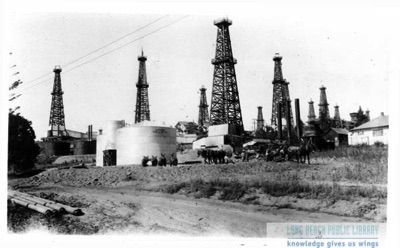
Shown here is a section of Signal Hill, showing a group of oil rigs, buildings, and a large tank at left. "National Tank and Manufacturing Company" is marked on the tank. People and mule are at work in the center of the print. A dirt road runs from left to right in the immediate foreground. The donor offers additional details below: The house on the extreme right is just north of Burnett Street, on Walnut Avenue. George Green's house is visible in the distant center background, the Tower house right center. This image also shows mule teams and workmen grading oil sumps.
